How to Easily Fix a Loose Scabbard or Saya Mouth at Home - Sword and Katana Maintenance Guide
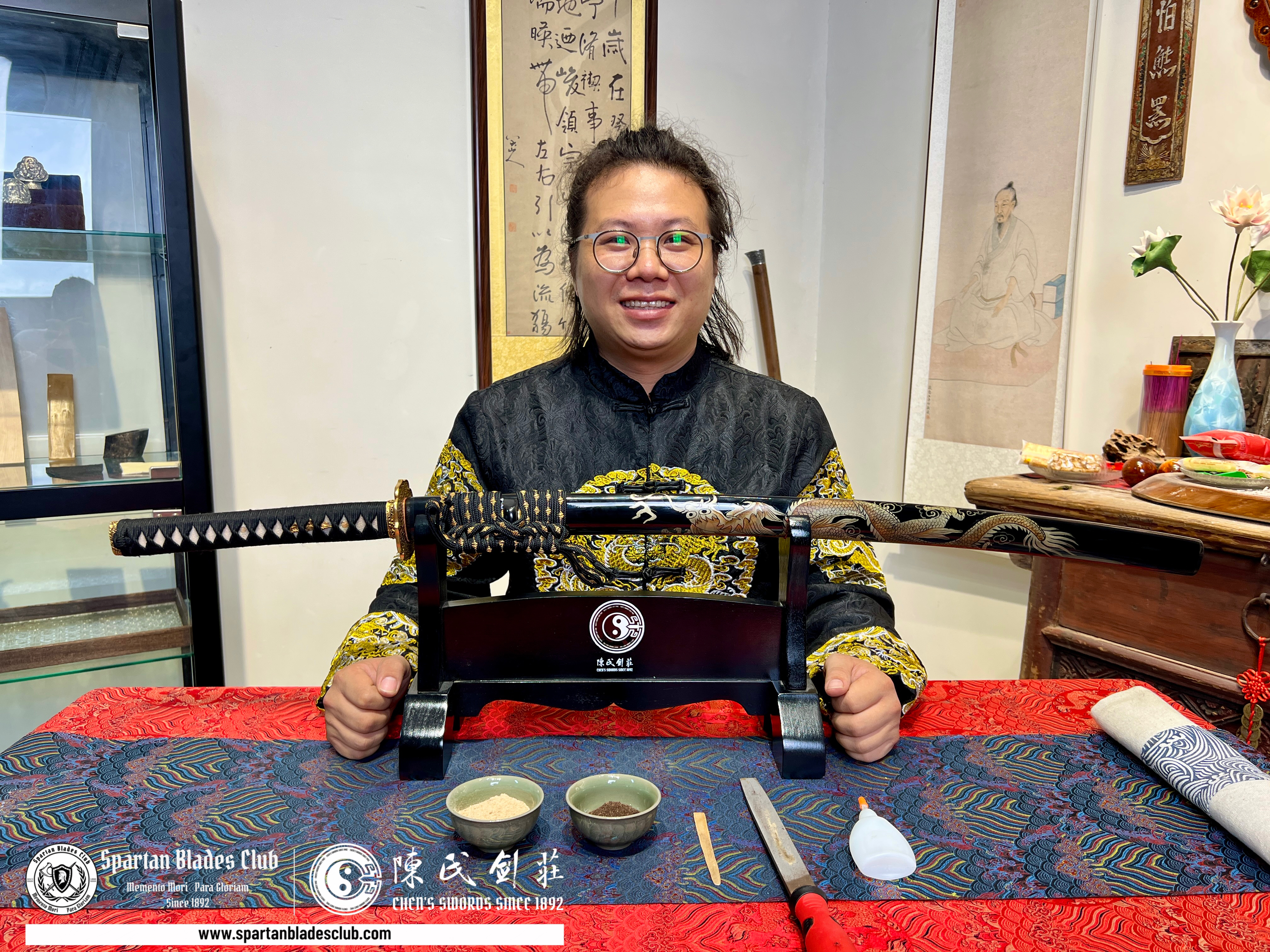
Why Do Scabbards and Saya Become Loose?
Wooden scabbards—especially those housing carbon steel blades—are sensitive to humidity and temperature fluctuations. Repeated insertion and withdrawal of the katana blade can gradually wear down the saya’s interior, particularly at the mouth (koiguchi). When the saya mouth widens, the habaki (the metal blade collar) no longer seats securely, resulting in a loose fit that compromises safety and blade preservation.
This repair method is based on a simple woodworking principle: adding a reinforced layer of wood powder and adhesive inside the saya mouth to reduce its inner diameter and increase friction with the habaki.
Tools & Materials You’ll Need for Saya Repair
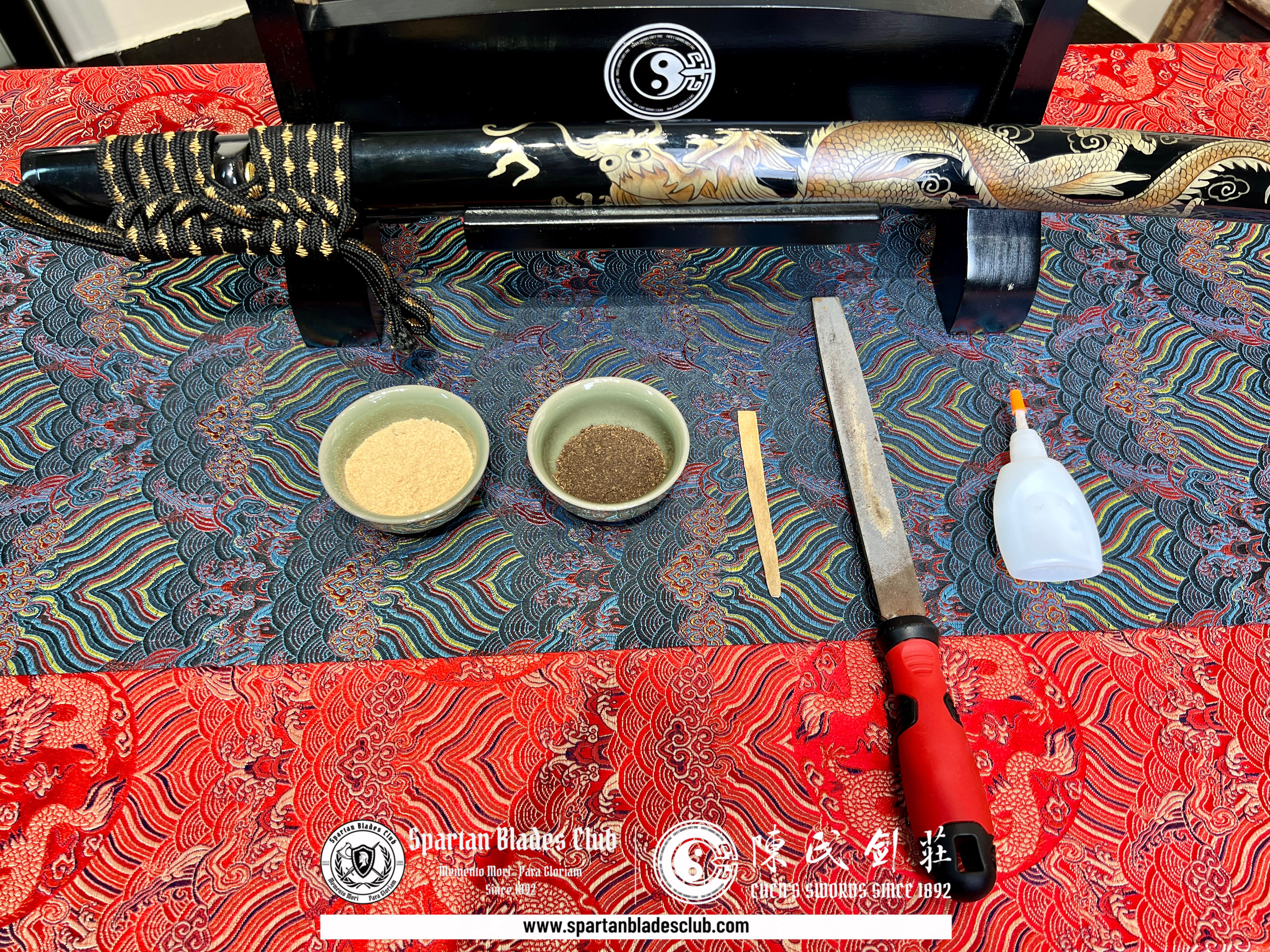
Gather these simple tools and materials before starting:
● Wood powder or fine sawdust – Choose a color matching your wooden saya for a seamless look.
● Small spoon – For precise application of the wood powder.
● Small file – To gently adjust the fit after repair.
● Strong liquid glue – Fast-drying super glue (e.g., 502 adhesive) is recommended for quick, durable bonding.
● Cleaning supplies – Soft cotton cloth or cotton swabs for thorough cleaning.
● Safety gear – Gloves and safety glasses to protect against accidental glue contact.
Step-by-Step Guide to Fixing a Loose Saya Mouth
Step 1: Clean the Saya Mouth Thoroughly
Using a soft cotton cloth or swab, thoroughly clean the inner 1–3 cm of the saya mouth. Ensure it’s free of dust, oil, and old lubricant, and completely dry. A clean surface is crucial for a strong bond with the adhesive and wood powder mixture.
Maintenance Note: Regular cleaning and oiling of your blade is part of good katana care, but keep oils away from the saya interior during this repair.
Step 2: Apply a Thin Layer of Wood Powder
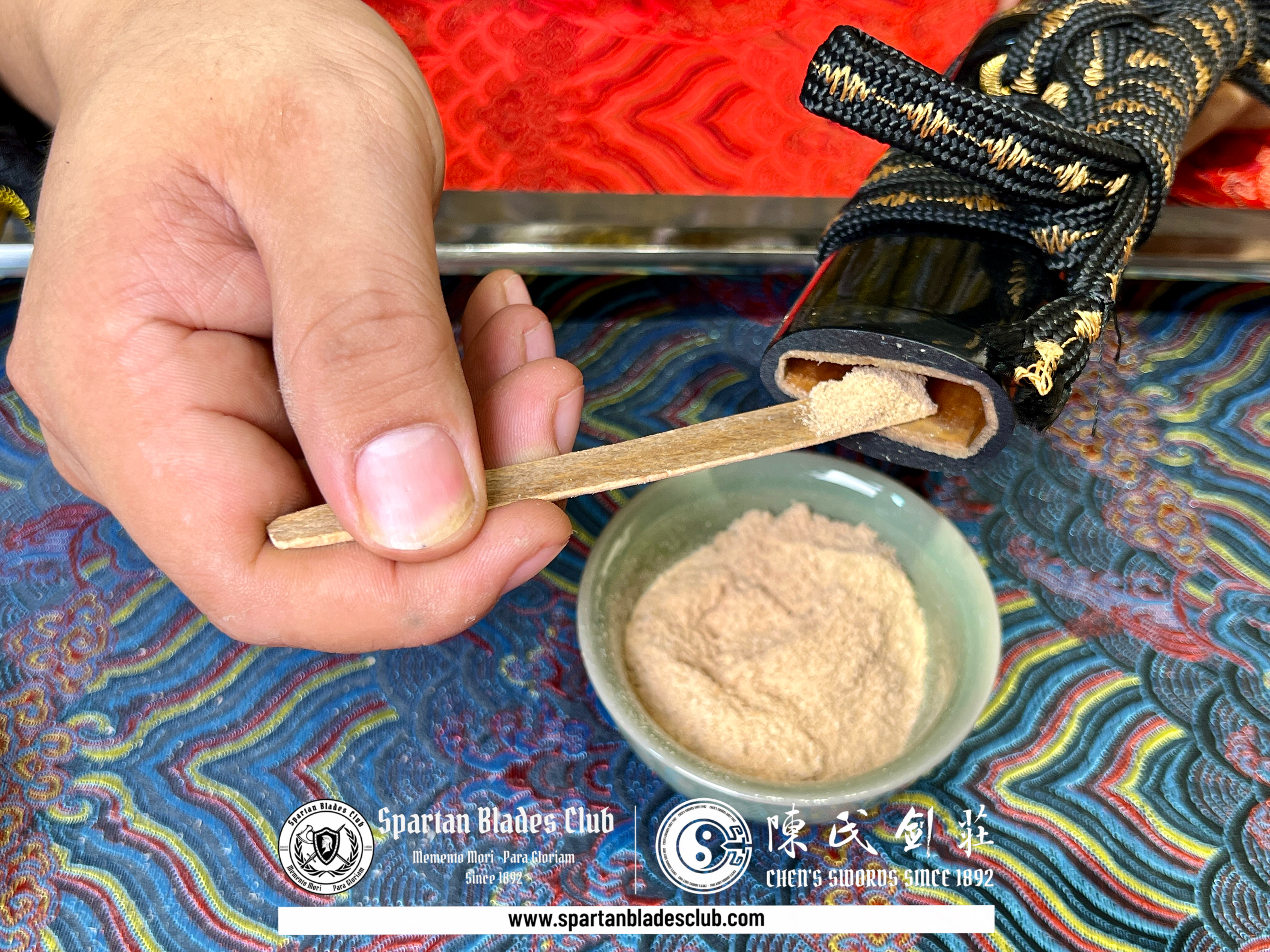
Tilt the saya upward. Use the spoon to sprinkle a thin, even layer of wood powder inside the cleaned area. Avoid applying too much—start with a light coat to prevent over-tightening.
Step 3: Spread the Wood Powder Evenly
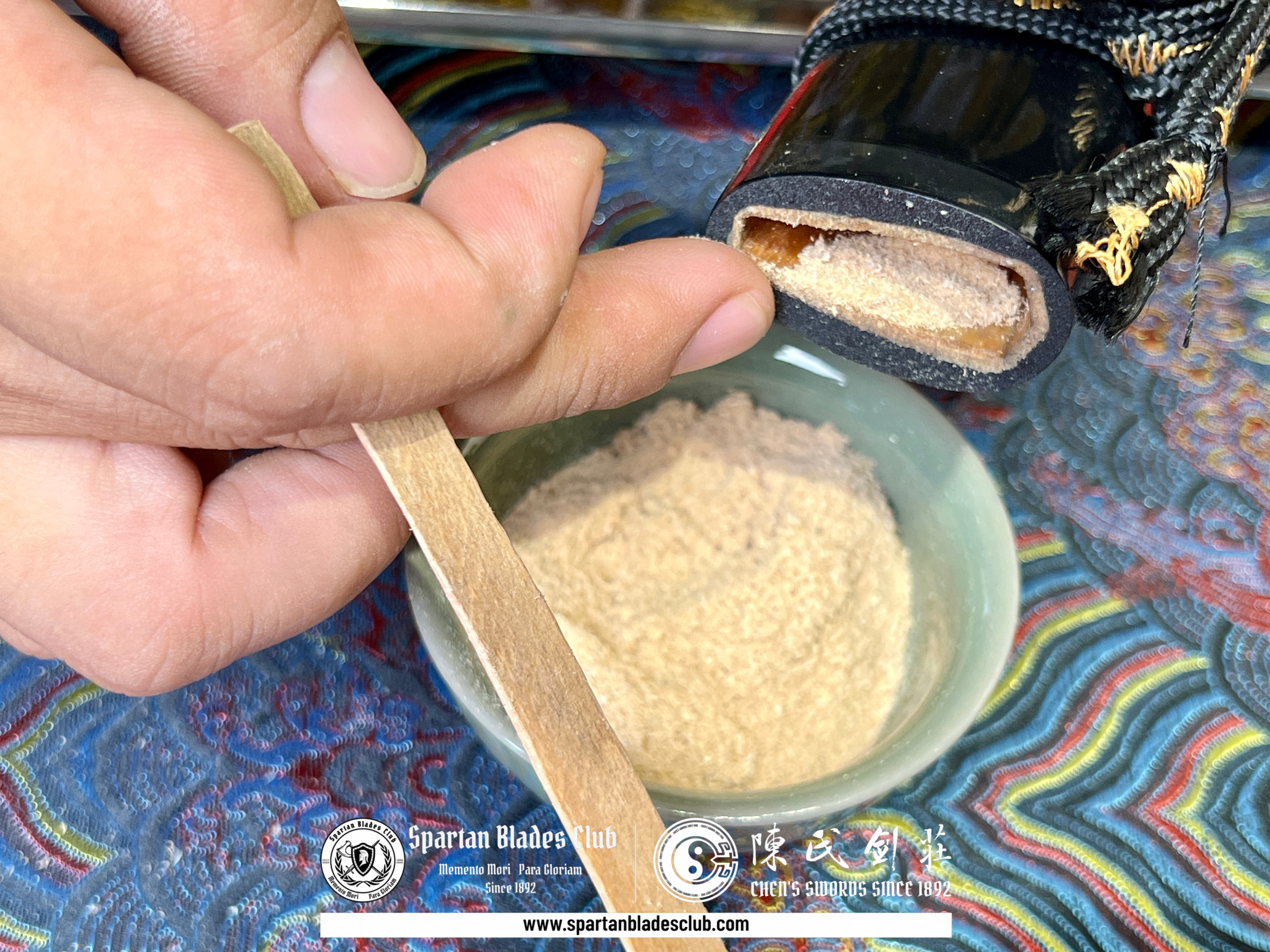
Gently spread the wood powder with a small tool to create a smooth, uniform layer. Uneven application can cause inconsistent pressure when inserting the katana blade.
Step 4: Apply Strong Glue Carefully
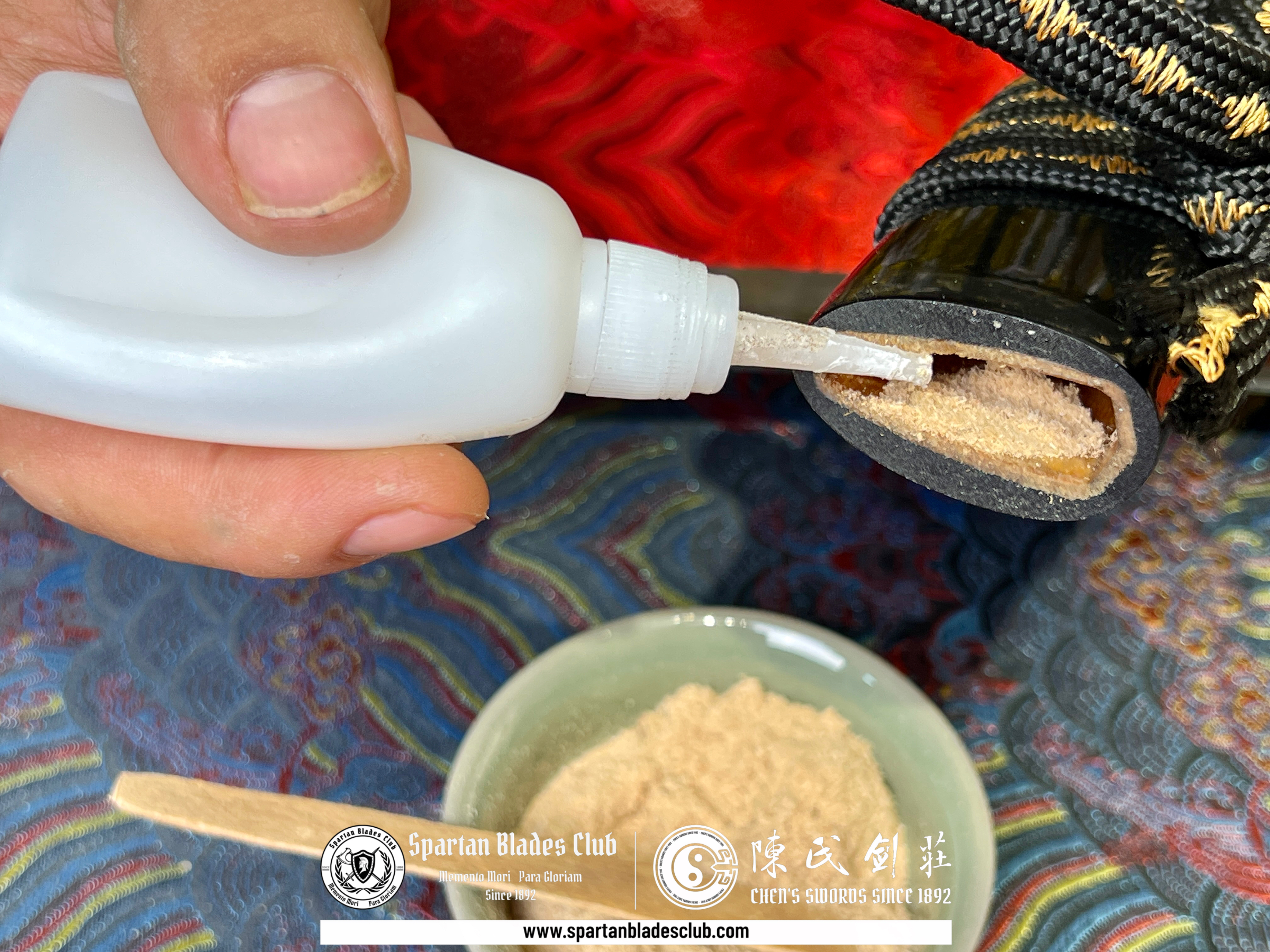
Carefully drip a small amount of strong glue (like 502 adhesive) into the saya mouth, just enough to soak the wood powder.Keep the scabbard tilted for 5–20 seconds to prevent glue from leaking deeper into the saya.
Step 5: Allow Proper Curing Time
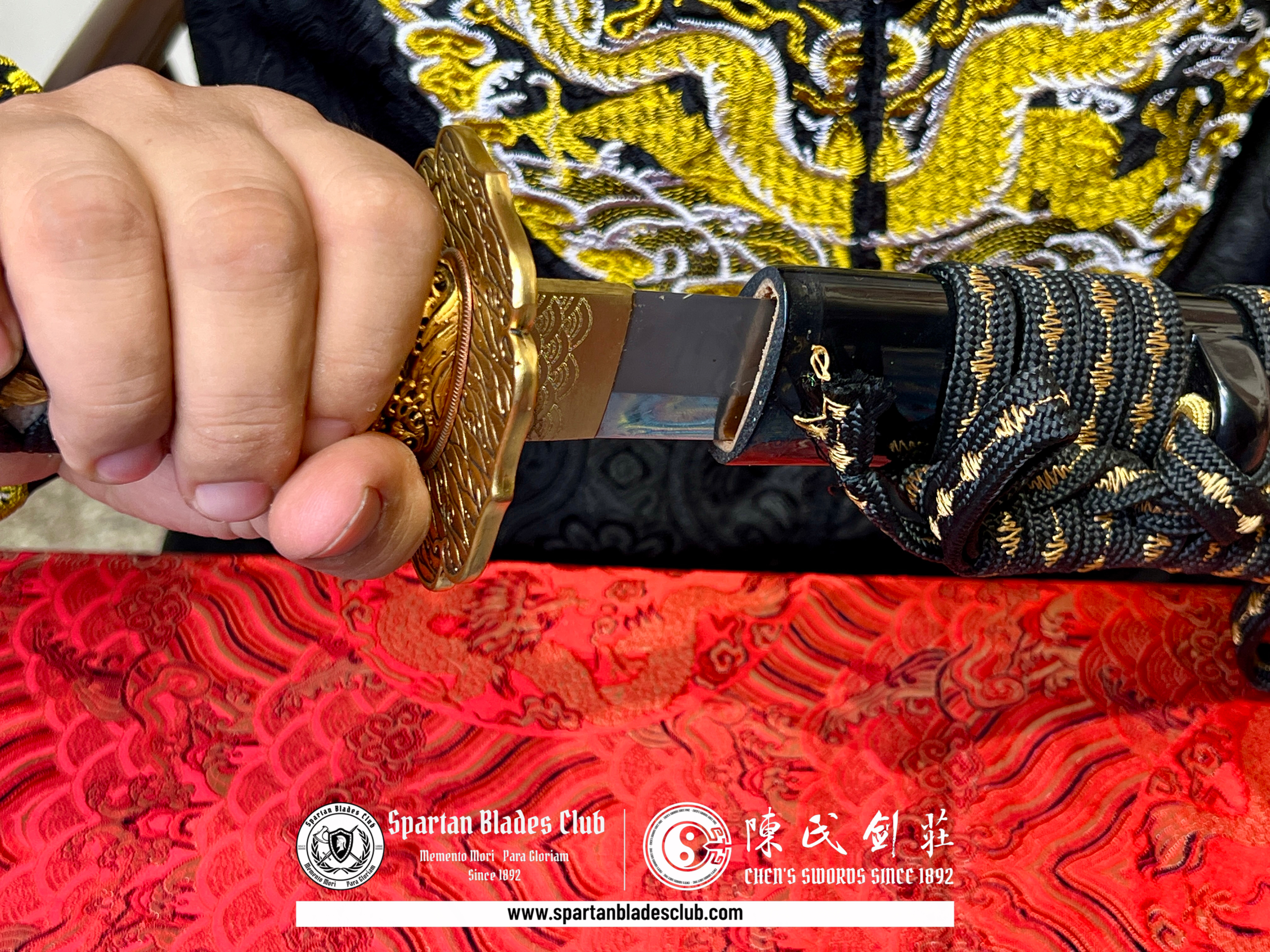
Let the glue cure fully as per product instructions (about 1 minute for fast-drying glue). Do not move or test the saya during this time.
Testing and Adjusting the Fit After Repair
Once fully cured, gently insert the katana blade to test the fit:
● Fit is perfect – Success! Your scabbard is restored.
● Still too loose – Repeat Steps 2–5, adding thin layers until desired tightness is achieved.
● Too tight – Use a small file to gently smooth the repaired area, then clean and test again.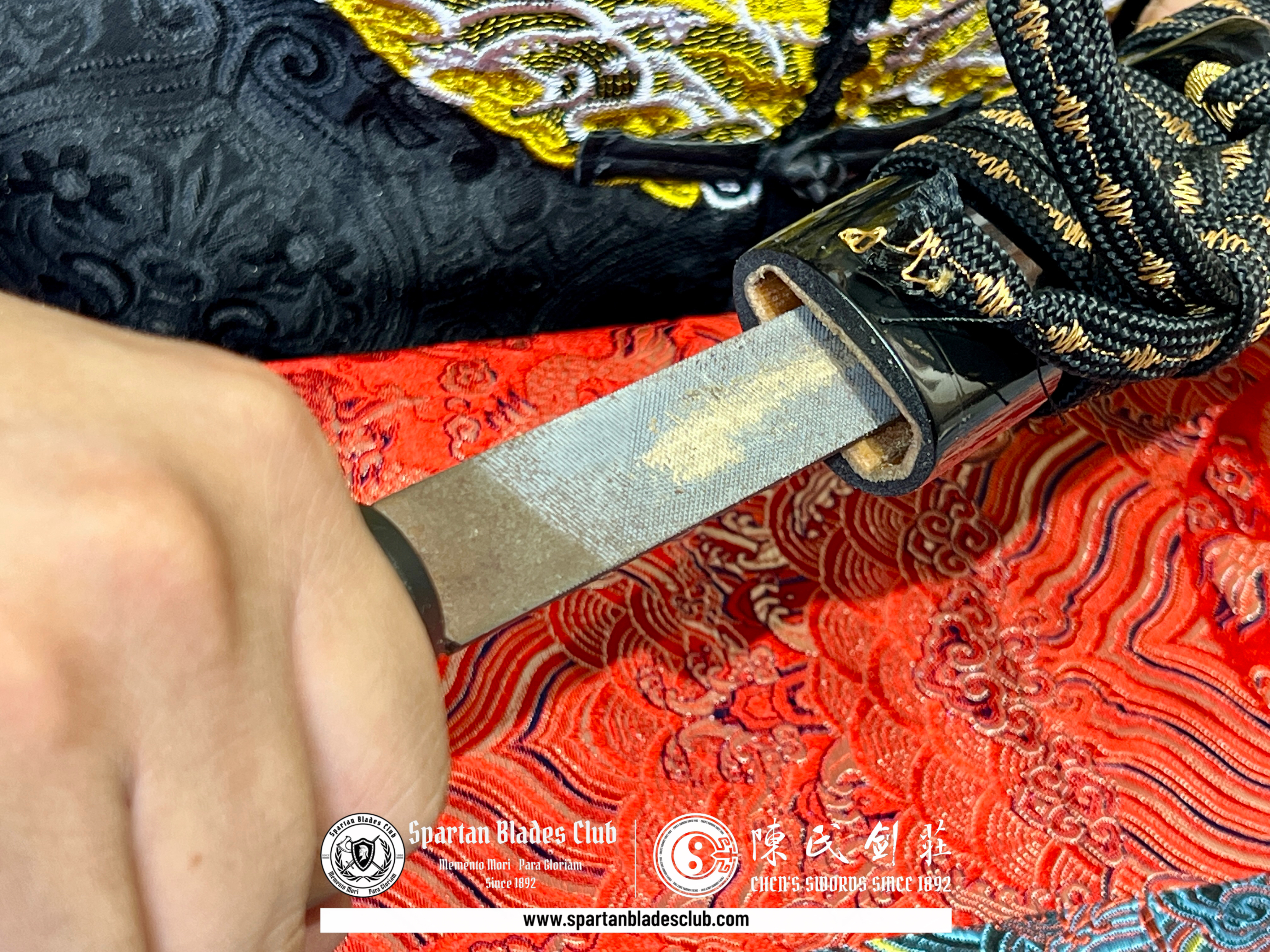
Pro Tip: After this repair, maintain your saya by storing the katana in a stable environment to minimize wood expansion or contraction from humidity changes.
Pro Tips & Safety Notes for DIY Katana Maintenance
● Safety First – Wear gloves and safety glasses to protect against accidental glue contact.
● Work in a Well-Ventilated Area – Avoid inhaling fumes from the adhesive.
● Test First – Try the glue and wood powder mix on a scrap piece of wood beforehand.
● Apply Thin Layers – It’s better to build up the repair gradually.
● Maintain Regularly – Keep your scabbard dry and avoid extreme temperatures to preserve the repair. Implement a regular sword maintenance routine that includes inspecting the saya.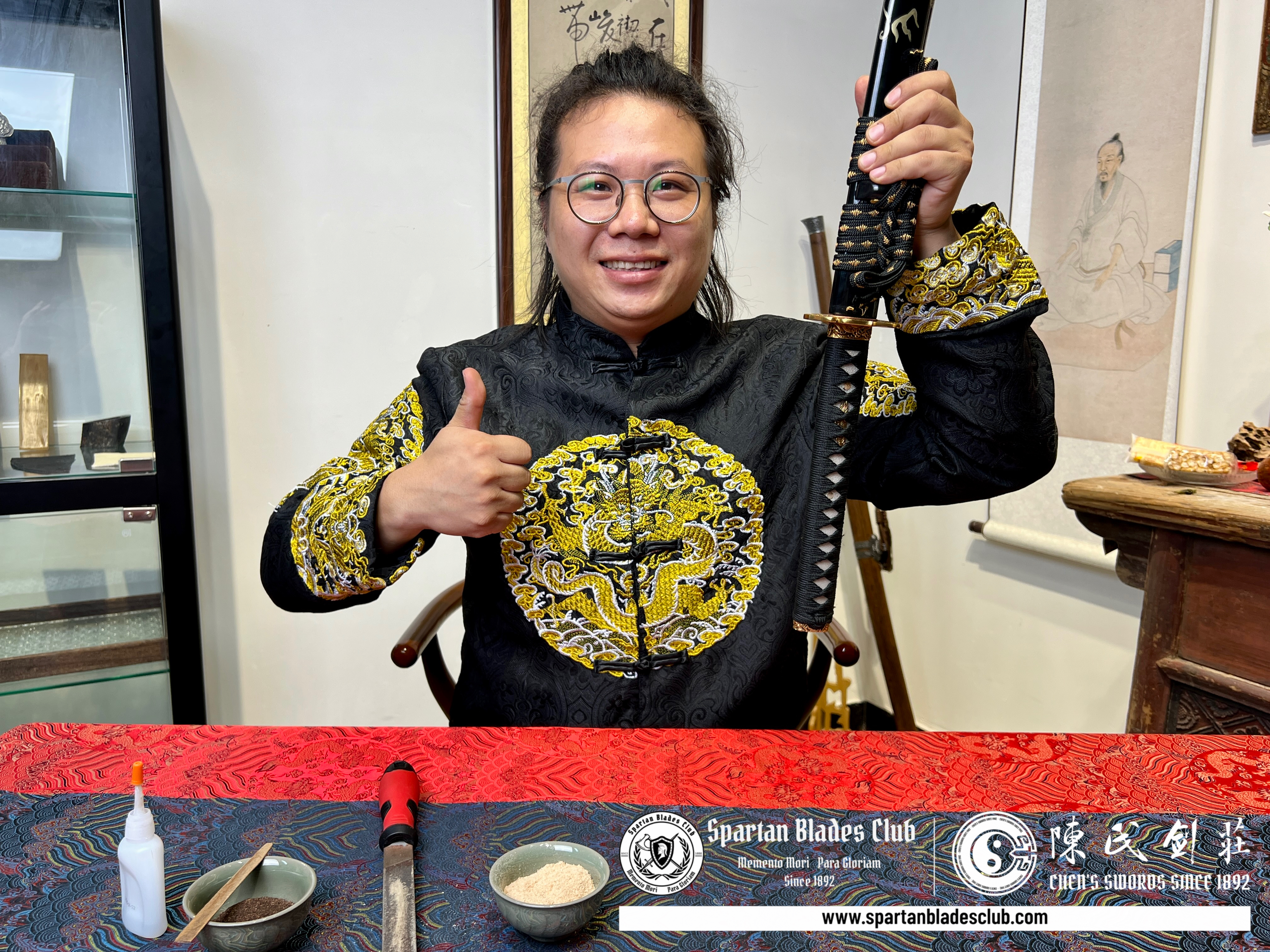
Long-Term Katana Care and Saya Maintenance
Fixing a loose saya mouth is just one part of katana ownership. To ensure your Japanese sword stays in prime condition:
● Regularly inspect the saya, blade, and fittings.
● Clean and oil the blade periodically with specialized sword oil to prevent rust.
● Store your katana in a horizontal position on a sword rack, in a stable environment, to protect the saya and blade.
Final Thoughts
With this simple at-home repair method, you can confidently fix a loose scabbard yourself, ensuring your katana remains secure and protected. Regular inspection and maintenance are key—we recommend checking your saya fit every six months.
For valuable antiques, complex damage, or if you're unsure about DIY repairs, always seek help from a professional sword restorer (togishi) to preserve your blade’s value and integrity.
We hope this DIY guide helps you maintain your blades and scabbards in top condition! For more detailed tips on katana polishing, rust removal, and other sword maintenance skills, explore our series on professional "Sword and Katana Maintenance".


 USD
USD














